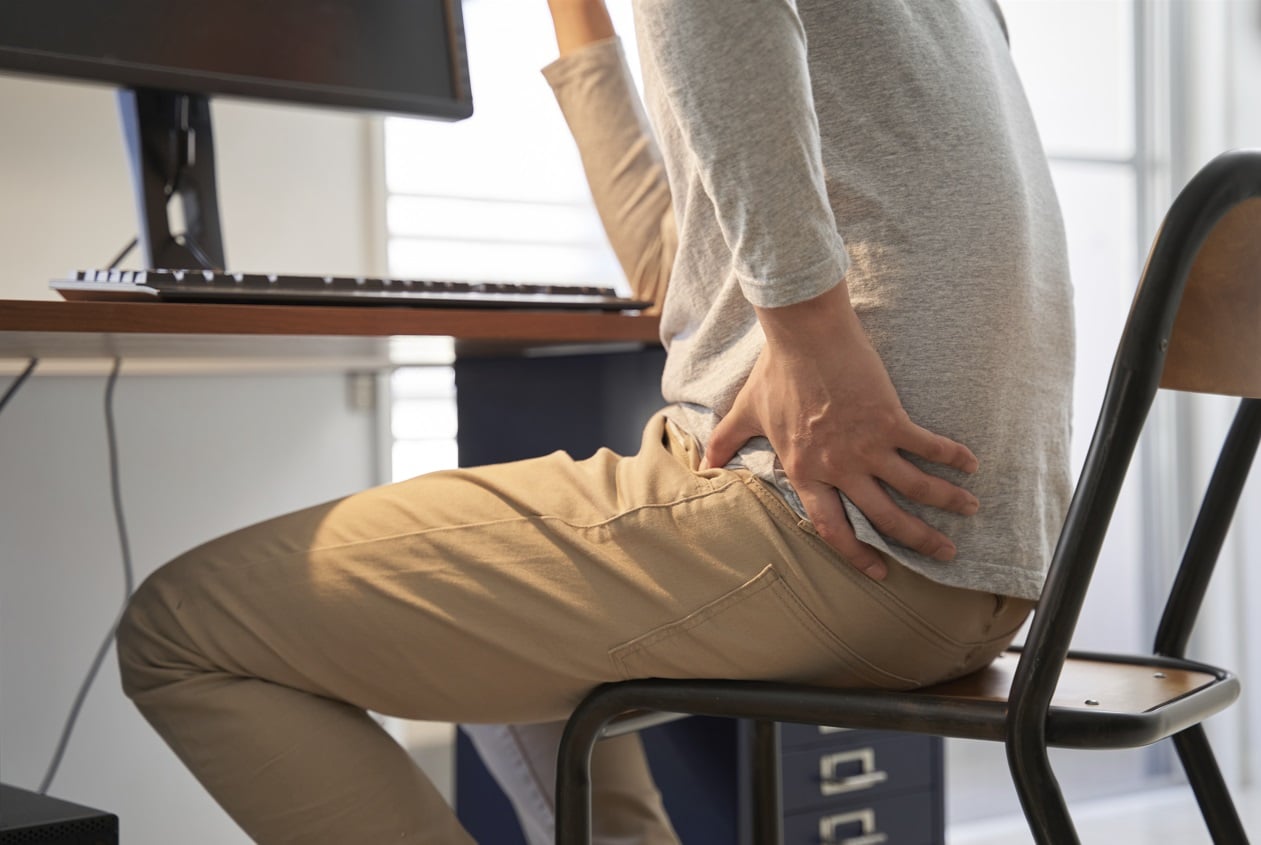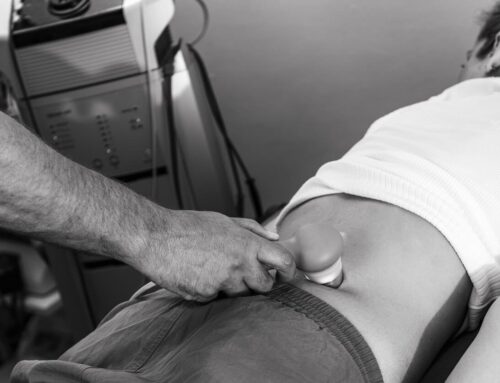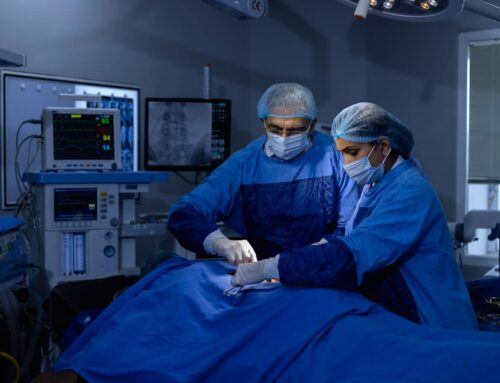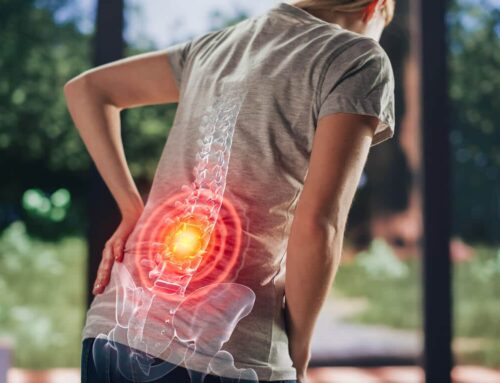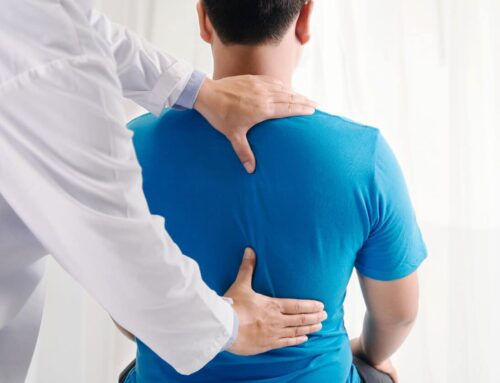Being physically active is an important way to keep your body healthy, but it is estimated that most adults in the U.S. spend 6.5 to 8 hours a day sitting down. Whether sitting at a desk, driving or on the couch watching TV, prolonged sitting can cause joint pain, especially lower back and hip pain from sitting.
If your joints are stiff or you experience pain in your hips or lower back, Cary Orthopaedics is here to help. In this article, we highlight the the best ways to combat joint pain caused by prolonged periods of sitting.
Why does sitting cause hip and back pain?
While injuries can occur suddenly while exercising or performing daily errands, sitting can actually cause damage over time. In addition to contributing to heart disease, a musculoskeletal disorder or other illnesses, a sedentary lifestyle can also cause ongoing joint pain in the hip, lower back or pelvis.
This is why the Occupational Safety and Health Administration (OSHA) creates specific guidelines for sitting at work and for labor-intensive jobs. OSHA encourages employees at computer stations to sit in positions that reduce strain on the body and to stand up and stretch frequently.
Dr. Chad Parkes, a physician at UNC-Cary Orthopaedics, explains that sitting for eight hours a day can lead to “tightness of the hip flexors, which can have many effects on posture, muscle fatigue, low back pain, and difficulty walking or moving.”
What body parts does frequent sitting affect?
Your body contains hundreds of joints, but according to the Arthritis Foundation, the hip is “one of the body’s largest weight-bearing joints.” Sitting puts a great deal of pressure on your hips. It also place strain on your spine and another important joint, the shoulder.
To make a ball-and-socket joint, the hip contains:
- Femoral head: A ball-shaped piece at the top of the femur
- Acetabulum: A socket in the pelvis that connects to the femoral head
In addition to connecting to the pelvis, the hip contains muscles and ligaments that connect to the legs and the back. Most notably, the gluteal muscles connect to the buttocks, and the Iliopsoas muscle connects from the lower back to the femur.
When one sits for long periods of time, the muscles surrounding the hip relax, which leads to the tightening of hip flexors. This affects the surrounding muscles, sciatic nerves and the hip joint itself. Stagnation from sitting can also lead to decreased blood flow in the legs, tight muscles in the upper back and chest, and pressure on the spine.
Ways to prevent and treat hip pain from sitting
There are ways to prevent pain in your hips, pelvis and lower back if you have to sit all day. Try these methods at home, work or while traveling in a car:
- Posture: When sitting, keep your knees at a 90-degree angle and your feet are flat on the floor. Even if you are driving and cannot keep your feet flat, you can relax your shoulders and hold your head in a neutral position instead of tilted.
- Seat adjustment: Maintain proper sitting posture by allowing your arms to rest comfortably and ensuring your spine is properly supported.
- Short breaks: Whether you’re working at your desk or on a road trip, take frequent stretch breaks or get up and move around.
- Seat position: Shift seated positions frequently; for example, uncross your legs to loosen your hips and distribute your weight evenly.
These simple adjustments can help prevent common causes of hip and back pain from sitting.
If you already experience hip, pelvic or back pain and have ruled out conditions like arthritis, tendinitis, pinched nerve or herniated disc, there are several at-home treatments available.
To treat mild pain from sitting at home, you can try:
- Pain relief medication: Over-the-counter medications do not require a prescription. If pain does not improve after following the intended dosage, seek professional medical treatment.
- Temperature treatment: A cold or warm compress can help relieve pain and inflammation.
- Extra support: From living room pillows to specialized lumbar support, additional cushioning can help support to your lower back.
- Clothing: Wearing loose clothing and flat footwear can help improve hip pain and mobility.
Professional treatments for pain from sitting
If low back or hip pain from sitting does not go away with at-home remedies, professional medical treatment can help. Physical therapy is frequently used to help relieve symptoms without the need for surgery.
- Cary Orthopaedics offers multiple types of physical therapy for hip, pelvic, and back pain, including therapeutic exercise, Graston technique, dry needling and manual therapy.
Our PT specialists can develop a personalized treatment plan for you, ranging from stretches to reduce back pain to prescribing custom orthotics to improve posture.
Physical therapists in Cary, Holly Springs and Morrisville
If you’re experiencing pain from prolonged periods of sitting or have recurring back, pelvic or hip pain, our physical therapists can help. Cary Orthopaedics is committed to improving your day-to-day well-being. Contact us today for a consultation.

